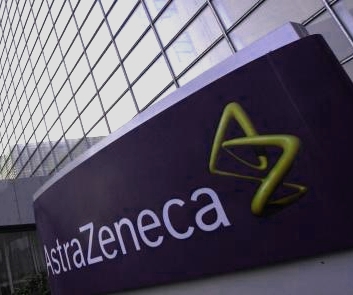 Pharmaceutical major AstraZeneca is stepping up its serialisation plans, with ten manufacturing sites and more than 30 production lines generating medicines with item-level serial numbers on their packaging at the start of 2011.
Pharmaceutical major AstraZeneca is stepping up its serialisation plans, with ten manufacturing sites and more than 30 production lines generating medicines with item-level serial numbers on their packaging at the start of 2011.
AstraZeneca has invested in what it calls "at-line mass serialisation" (ALMS) - ahead of legislative mandates in most countries - in response to a number of cases of counterfeiting of its products. Those included the now-notorious case in the UK in 2007, in which €2.8m-worth of fake prostate cancer drug Casodex (bicalutamide) infiltrated the legitimate supply chain. To date that is still the largest recall in AstraZeneca's history.
Since then the company continues to encounter counterfeiting - for example of cardiovascular brand Lipitor (atorvastatin) in Indonesia, Seroquel (quetiapine) for schizophrenia in Turkey and the antibiotic Meronem (meropenem) in several countries in Latin America, North Africa and India.
AstraZeneca's Christoph Krähenbühl told the recent IQPC Pharma Serialisation and Traceability conference in London, UK, that the company started to look at anti-counterfeiting options back in 2006/7, and decided to implement a "broad but shallow approach" relying on the application of unique serial numbers onto the unit packs of its medicines to allow their identification and verification.
The approach started by focusing on one brand (the gastrointestinal product Nexium [esomeprazole]), but AstraZeneca quickly realised that it was difficult to second-guess which brands would be appealing targets for the counterfeiters. Now, the firm applies serialisation to new products as they launch as a matter of course, and retrofits the capability to older brands on a case-by-case basis.
Krähenbühl, who manages the pack coding and product security project at the drugmaker, stressed that while counterfeiting is a major focus of AstraZeneca's serialisation project, there are other important benefits.
"Medication errors carry a significant human and financial cost and could be reduced with serialisation, while recalls can also be made more efficient," he pointed out. "On the whole, there are too many manual interventions in the healthcare supply chain, causing inefficiencies which could be cut by identifying individual medicine packs."
Moreover, with legislation just starting to emerge around the world in an uncoordinated way, AstraZeneca is hoping that early adoption of serialisation technology may help influence the selection of appropriate standards, as well as allowing it plenty of time to perfect its systems ahead of any regulatory mandate.
At the moment the picture is unfocused, with more questions posed than answered by the various initiatives ongoing around the world. There is no consensus on the preferred carrier (e.g. stickers, liner barcodes, RFID tags, 2D datamatrix), and while there appears to be traction behind GS1 standards this is not yet assured.
It also remains unclear whether drugmakers should plan for a full pack-level traceability system, a pedigree approach or a simple end-to-end system where the product is verified before use, e.g. at the point of dispensing.
"This divergence makes life for a globally operating, globally sourced pharmaceutical company very difficult," said Krähenbühl. "What is needed is a harmonised approach which can be adapted to address specific national requirements."
From a technical perspective, AstraZeneca's objective has been to implement a core system that is adaptable enough to cope with all but the most outlying requirements of legislative systems around the world.
The approach relies on the use of tamper-evident seals on packs, along with 2D datamatrix codes carrying the serialisation information which is read at the point of production and stored in a centralised, global repository known as PSDM (Product Security Data Management). The pack codes can then be verified within the supply chain.
AstraZeneca has been using Axway's Track & Trace system to collect the product security data into the repository, and towards the end of last year confirmed its commitment to that arrangement. The Axway Track & Trace repository is now handling close to 100 million serialised product data records, from the three global sites where item-level serialisation was first implemented.
Along with Axway, AstraZeneca has tapped into technology from Neri (labellers) and Systech (serialisation equipment).
"We have favoured initially a 'book-end' approach, with genuine products checked into the supply chain and then checked out again at the end," said Krähenbühl. "It would be great to have track-and-trace and full visibility over the supply chain, but we believe it is too complex and expensive to start with that as an objective."
Serialisation also has benefits in terms of safeguarding the confidentiality of AstraZeneca's other security features. For example, if a customs officer contacts the company to check authenticity this can be achieved easily using the serial number, without giving away any information on covert technologies.
The system has already evolved to meet France's batch-level CIP13 requirements and Turkey's serialisation initiative, and with Axway's help is now evolving again as it migrates to GS1's EPCIS data-sharing standard. Keeping the numbers secure is a primary objective, to avoid anyone duplicating them, inserting fake numbers in the system or indeed just breaking it.
"While our approach to data has been broad but shallow, we knew all along we would have to enter the 'third dimension'," noted Krähenbühl.
With that in mind AstraZeneca has also started some pilots looking at adding features to primary packaging and - mindful of Turkey's requirements - aggregation of data to link unit-dose packs with pallets and cases.
©
SecuringIndustry.com




 Pharmaceutical major AstraZeneca is stepping up its serialisation plans, with ten manufacturing sites and more than 30 production lines generating medicines with item-level serial numbers on their packaging at the start of 2011.
Pharmaceutical major AstraZeneca is stepping up its serialisation plans, with ten manufacturing sites and more than 30 production lines generating medicines with item-level serial numbers on their packaging at the start of 2011.